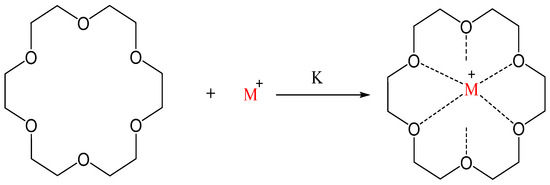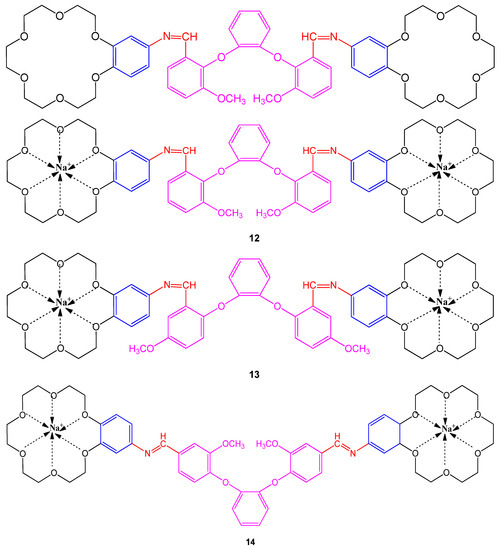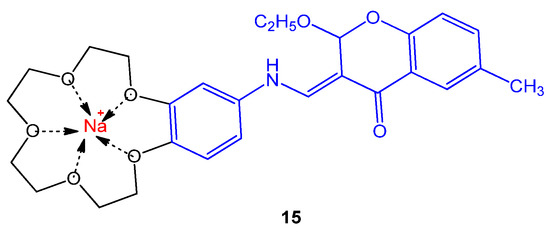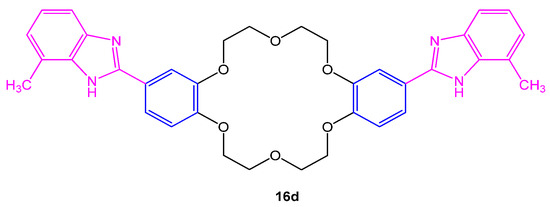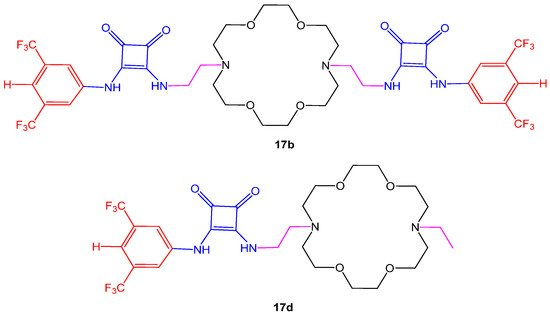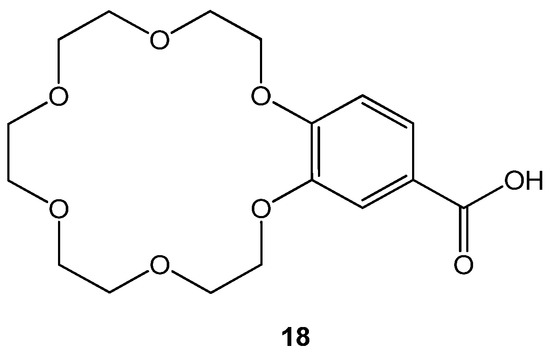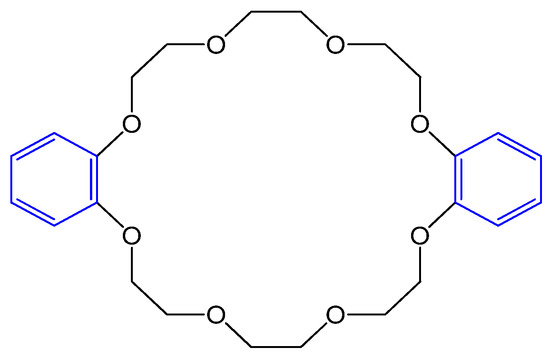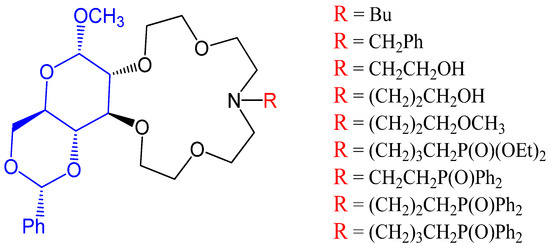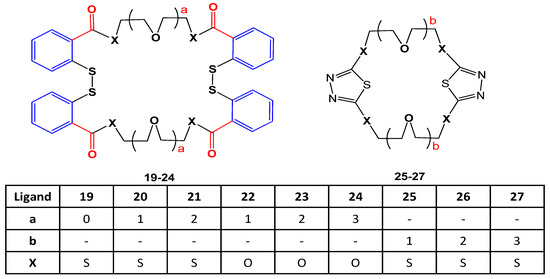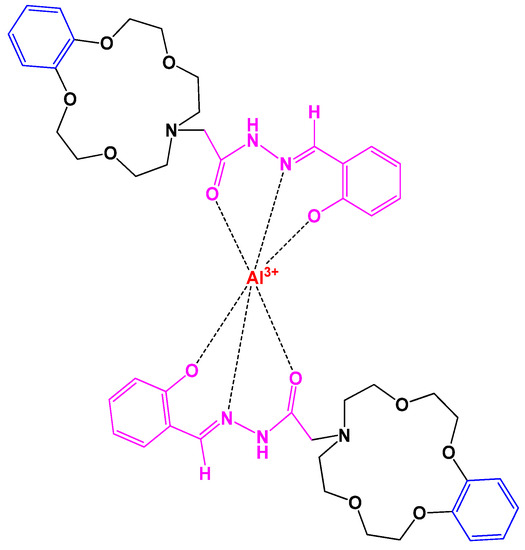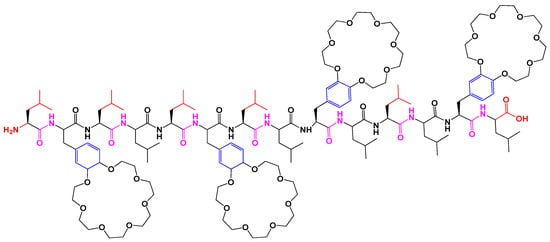Cytotoxic potential of aza-crown ether-squaramide conjugates (
17a–
d) were measured through MTT assay at the concentration of 50 µM choosing three cancer cell lines; human lung carcinoma (A549), human breast cancer (MCF-7) and human liver cancer (HepG2). The inhibitory concentration (IC
50) in cell growth was compared with the doxorubicin drug. Results have shown that compounds
17b and
17d given in
Figure 4. displayed moderate anti-proliferative activity as compared to others. Furthermore, the compounds enhanced cytotoxicity in HeLa cells in the presence of chloride or sodium ions that move across the cell membrane and promote cell apoptosis
[12]. Another study reported in vitro anti-proliferative potential of the crown ether acyl derivatives in HBL-100, HeLa, SW1573, and WiDr human solid carcinomas, using cisplatin and etoposide as positive controls. The derivative showed comparable activity against WiDr cell line
[13]. Two aza-crown ethers,
N,N′-bis (dithiocarbamate)-1,10-diaza-18-crown-6 (L
2−) were studied for their anticancer potential human cervix carcinoma cell line HeLa-229, the human ovarian carcinoma cell line A2780, and cisplatin-resistant mutant A2780 cis cells. The analysis revealed a new strategy to design metal-based drugs. The aza-crown ether Pt complex ligand increases affinity for antitumor activity, whereas the addition of Na or K salts further boosts the activity as compared to cisplatin, taken as reference drug
[14].

